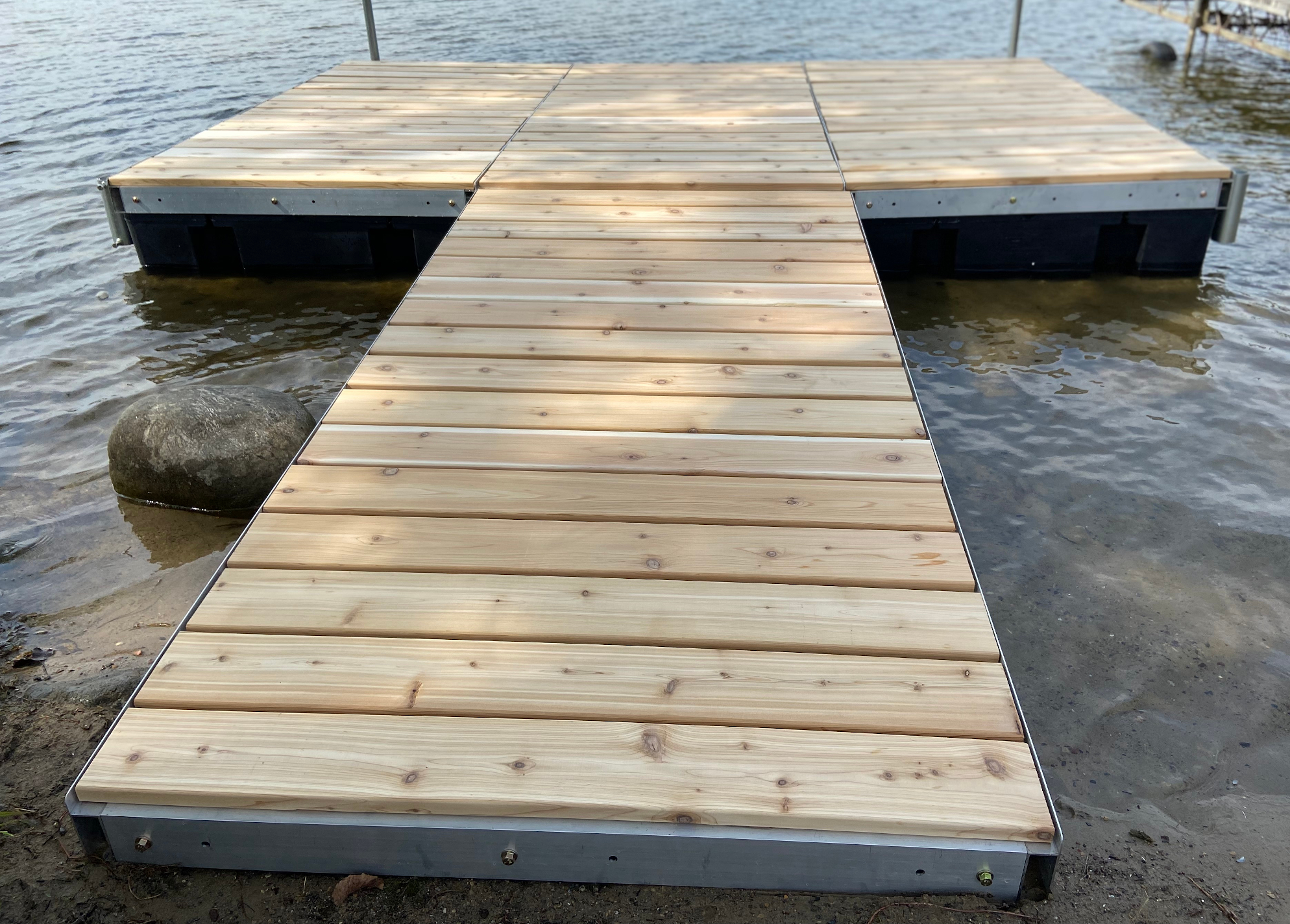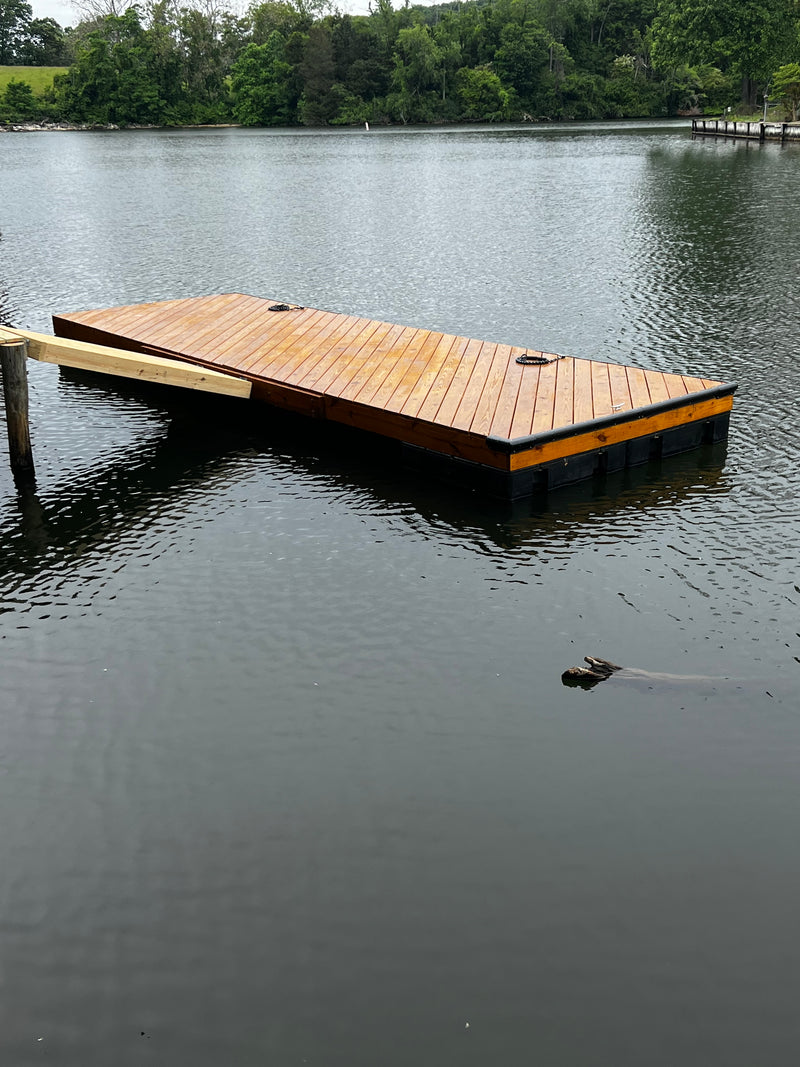Create the Perfect Docking Service With Floating Docks
Floating docks existing a functional service for a selection of maritime needs, adapting seamlessly to rising and fall water degrees and diverse vessel types. As we check out the necessary elements that add to the performance of floating docks, several key elements pertaining to stability and upkeep will emerge, increasing concerns regarding how to maximize your docking experience.

Advantages of Floating Docks
Floating docks offer many benefits that make them an excellent option for various maritime applications. Among the primary benefits is their adaptability to altering water degrees. Unlike repaired docks, floating docks increase and loss with the trend, making certain constant access for vessels. This function is especially essential in locations susceptible to significant tidal fluctuations or seasonal water degree adjustments.
Furthermore, floating docks are typically easier and quicker to install contrasted to traditional fixed frameworks. Their modular style enables for straightforward assembly and disassembly, promoting upkeep and relocation when required. This flexibility is especially beneficial for temporary applications or in environments where problems may change.
Floating docks also often tend to be much more eco-friendly, as they minimize disturbance to the seabed and surrounding aquatic environments. Their resilient nature decreases the threat of damage to marine life, advertising a healthier atmosphere. Furthermore, these docks can be customized to suit numerous vessel sizes, ensuring that they fulfill particular functional demands - floating dock company.
Ultimately, the mix of flexibility, simplicity of installment, and environmental considerations makes floating docks a very effective option for a large range of maritime requirements.
Choosing the Right Materials
Choosing the appropriate materials for floating docks is vital to guarantee durability, stability, and sturdiness. The selection of products directly influences the dock's efficiency in different ecological problems, consisting of direct exposure to water, sunshine, and potential wear from marine web traffic.
Typical materials made use of for floating docks consist of aluminum, timber, and high-density polyethylene (HDPE) Light weight aluminum is light-weight, corrosion-resistant, and calls for marginal upkeep, making it an outstanding choice for longevity. Its initial price can be greater contrasted to various other materials.
Wood, while cosmetically enticing and supplying a traditional look, can be susceptible to rot and pest damages otherwise effectively dealt with. Consequently, making use of pressure-treated wood or naturally durable varieties like cedar or redwood can alleviate these problems.
HDPE is a preferred choice because of its resistance to UV rays and chemicals, together with being eco-friendly. floating docks. It is light-weight and available in numerous shades, permitting customization
Inevitably, the ideal material selection will rely on certain demands, consisting of budget plan, wanted appearances, and environmental considerations. Mindful examination of these elements will certainly bring about a effective and resilient floating dock solution.
Design Factors To Consider for Stability
When making floating docks, making sure security is a basic element that can substantially affect their functionality and security. Security in floating dock style is affected by different variables, consisting of buoyancy, weight distribution, and the arrangement of parts.
Weight circulation is essential; uniformly dispersing tons across the dock prevents turning and boosts stability. This can be accomplished with critical positioning of docking equipment, such as cleats and fenders, as well as appropriate spacing home of floats. In addition, the measurements of the dock need to be thoughtfully prepared. Larger designs can offer raised stability, particularly in harsh water problems, while longer docks may require added assistances to stop drooping.
Another crucial consideration is the ecological influence, including wave activity and wind. Including attributes such as sidewalls or skirting can aid minimize the results of ecological pressures, preserving stability in damaging conditions. Eventually, a mix of thoughtful layout, material selection, and understanding of ecological elements will certainly generate a floating dock that fulfills both security and security requirements.
Setup Tips and Techniques

Following, secure the essential licenses and abide by regional policies, which might determine setup approaches and environmental factors to consider. Engage a certified service provider experienced in floating dock installations if needed. Use premium products developed for aquatic environments to improve sturdiness and long life.
When placing the dock, align it parallel to the coastline to promote easy access. Make sure that the anchoring system is durable, using cinder block or helical supports to maintain the dock versus wind and wave activity. It's vital to account for seasonal water level fluctuations, consisting of potential ice motion in cooler environments.
Throughout the installation, double-check the dock's floatation and security before completing the anchoring. Consistently check the installment for any indications of wear or damage. By adhering to these techniques and ideas, you can achieve a safe, functional, and cosmetically pleasing floating dock setup that fulfills your requirements.
Maintenance and Care Standards
Preserving and caring for floating docks is critical to prolonging their life-span and guaranteeing risk-free usage. Normal assessments need to be performed to recognize any indicators of wear, damage, or marine growth. Look for fractures, loosened fittings, or discolored locations on the dock's surface area, as these problems can compromise architectural stability.
Cleaning is essential. Use a pressure washing machine to eliminate algae, barnacles, and debris, which can build up over time. For persistent growth, consider eco-friendly cleaning representatives that won't view it now damage aquatic life.
Furthermore, inspect the mooring lines and supports regularly to guarantee they are free and safe from rust. Change any type of torn or harmed lines without delay to maintain stability.
Throughout severe weather condition, such as storms or freezing conditions, take preventive procedures. Protect the dock with extra mooring lines and, if possible, eliminate any type of removable components to stop damages.
Final Thought
In final thought, the application of floating docks offers a flexible and efficient docking you could try this out option appropriate for numerous maritime applications. With appropriate installment and normal upkeep, floating docks can offer efficient and reliable docking experiences for a vast range of vessels.
As we discover the essential components that contribute to the effectiveness of floating docks, numerous vital factors relating to stability and upkeep will emerge, raising questions regarding how to enhance your docking experience. Unlike fixed docks, floating docks increase and fall with the tide, making sure constant availability for vessels.When developing floating docks, making sure security is a fundamental facet that can dramatically affect their performance and safety. Stability in floating dock style is affected by various elements, including buoyancy, weight circulation, and the setup of elements. Ultimately, a mix of thoughtful style, material choice, and understanding of ecological elements will yield a floating dock that meets both security and security demands.